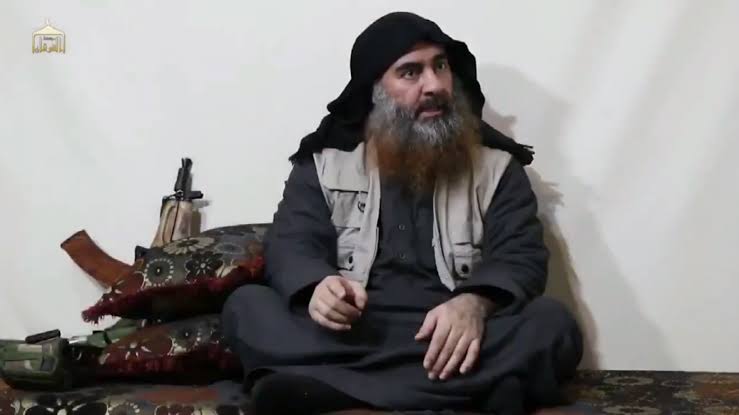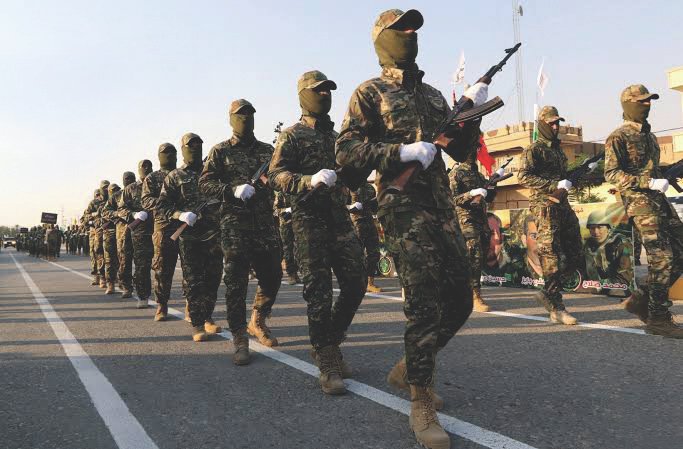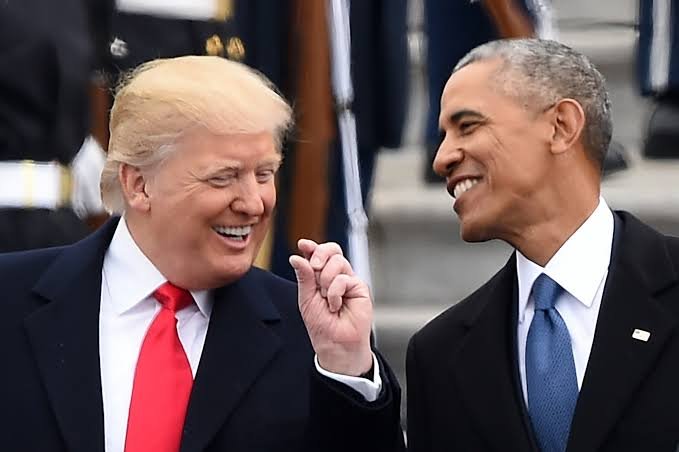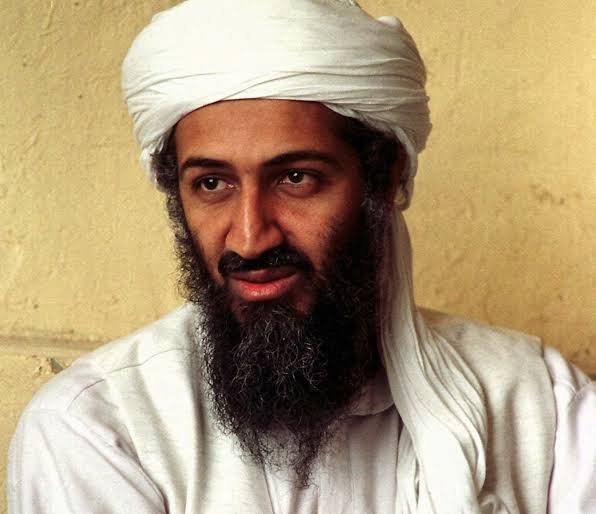
 Introduction: That a dreaded terrorist chief who ordered large-scale destruction of life and property and justified enslavement of people, all in the name of faith, will no longer be able to cause mayhem is a matter of satisfaction to all sane people of the world. If the credit of the killing of Osama bin Laden, founder and chief of Al- Qaeda, goes to President Obama then the credit for the elimination of the leader of the Islamic State (IS) – also known as ISIS – Abu Bakr al-Baghdadi, who had taken on the mantle of terror and carried out atrocities in the name of Islam against Muslims and others alike, in different parts of the world, goes to President Trump.
Introduction: That a dreaded terrorist chief who ordered large-scale destruction of life and property and justified enslavement of people, all in the name of faith, will no longer be able to cause mayhem is a matter of satisfaction to all sane people of the world. If the credit of the killing of Osama bin Laden, founder and chief of Al- Qaeda, goes to President Obama then the credit for the elimination of the leader of the Islamic State (IS) – also known as ISIS – Abu Bakr al-Baghdadi, who had taken on the mantle of terror and carried out atrocities in the name of Islam against Muslims and others alike, in different parts of the world, goes to President Trump.
In his imitable style, he announced on October 27, 2019, that a CIA-assisted military operation by the elite Delta Force of the US Army, had eliminated the IS leader in the Idlib province of North-Western Syria. The point, however, is to kill the ideology, and not just individual ideologues. So long as the ideology survives, the killing of one ideologue will only serve to produce another to take his place. Baghdadi, hence, will not lack a successor either!
IS – Genesis and a Brief History
Some analysts consider the rise of the IS as not a new problem but rather a new strand of an old problem. Baghdadi caught the world attention in 2014, when he took over large swathes of territory in Iraq and Syria and declared a Caliphate, a State governed under the Sharia Law of Islam, holding sway over millions of Syrians and Iraqis in an area the size of Britain, and himself as the Caliph. A rewind would be in order to know, in brief, the history of the Caliphate.
The Ottoman Empire, which lasted almost as long as the Roman Empire, included West Asia, North Africa, much of the North Black Sea coast, and South-Eastern Europe, right to the gates of Vienna. For 1300 years or so, the Caliphs, or the “successors”, took pride in developing the Islamic community that the Prophet Muhammad had left behind. The Caliphs were far from being rigid and inflexible; while a few were Islamist, but they loved music (anathema to the IS9); had a passion for not just reading the Koran and the Muslim Sunnah, but also spy novels and patronised the theatre. The Caliphs saw themselves as defenders of all faiths, not just Islam, that came to them for protection. Ultimately, of course, the Caliphate, like other Eastern European dynasties, was dissolved. In 1923 Mustafa Kemal abolished the Ottoman Empire, and a year later, the title of Caliph was also abolished.

The IS believes in absolute, impressive power and hence, hopes that some Islamic countries may come under its fold; it eyes Saudi Arabia as the prime target, considered as the custodian of the two holy mosques at Mecca and Medina and the epicentre of Islam. The IS believes in the Wahhabi school of Islam, practiced widely in Saudi Arabia under the active support of the monarchy. After announcing the Caliphate, the IS declared a war against not only the non-believers but also other sects and schools of Islam thus implementing one of the key tenets of Wahhabism. It holds a special hatred for countries like US, Israel and other Western nations with other nations like Spain and India, where Islam once prevailed also on its radar. The IS wishes to control such States, non- Muslim and other Muslim majority nations, where once Islam was all-powerful, but is now no longer, not just for symbolism, but to ensure the spread of its ideology.
IS evolved from the Al Qaeda affiliate in Iraq and was led by a Jordanian, Abu Musa al-Zarqawi, who was later killed in a US drone attack in 2006. It is interesting to note, there was no Al Qaeda in Iraq before 2003, the year of the US invasion. It was only after the fall of the secular regime and the ousting of Saddam Hussain, which brought about a Shia government that Al Qaeda, and its successor, the IS, flourished. In the wake of the US invasion, Zarqawi pledged allegiance to Osama, roped in other jihadis and became the main face of insurgency in US occupied Iraq. The Al Qaeda in Iraq formed an umbrella organisation, Islamic State in Iraq (ISI), which was significantly weakened in the face of the American surge and the ‘awakening movement’ of the Sunni tribesmen against its brutality. In 2010, after Baghdadi took over the reins of the organisation, the process of rebuilding it commenced; several attacks a month on enemy ground announced its arrival. By 2013, Baghdadi shifted his focus to Syria and joined the al-Nusra Front, which was supported by Al Qaeda and other regional players, with an aim to topple the Bashar al-Assad regime. With no major success in Syria, he merged his forces in Iraq and Syria and created the Islamic State of Iraq and the Levant (ISIL), and then changed it to the Islamic State of Iraq and Syria – ISIS. The group exploited the ‘Sunni versus Shia’, Muslim versus non-Muslim’, ‘Ruler versus Ruled’, Pious versus Non-believer’, typical of vested power plays.
The intense geopolitical rivalries among fractious regional powers of West Asia, plus the broader hostility between USA and Russia, created a fertile environment for the IS to thrive, and climb to its pinnacle. Once problems surfaced between the Shia-led regime in Iraq and the Sunni minority, the IS reverted its attention to Iraq, enlisting the support of Sunni tribes and Saddam loyalists, and starting occupying territory. It occupied the central city of Falluja and then, over-running Mosul it marched towards Baghdad, brutally massacring captured Iraqi soldiers and ethnic and religious minorities, in large numbers. Though its plan to takeover Baghdad failed, the IS did occupy a number of towns and cities and consolidated its position declaring the establishment of an Islamic Caliphate and changing its name to Islamic State, the name it bears until today. By the time the Caliphate was declared in 2014, it was obvious that Baghdadi aimed to be the new ruler of the entire Muslim world, the main causal factors being the divisions between the various Arab, Turkish, Persian, and Jewish States, overlaid by the ill starred American invasion of Iraq in 2003.

Abu Bakr al Baghdadi – The Man – The Leader
Abu Bakr al-Baghdadi, born as Ibrahim Awwad Ibrahim al-Badri in a family of preachers, was a shy child spending his free time in a mosque in Samarra, about 60 miles North of Baghdad, learning the Koranic chant. In much the same way, over the years, he unobtrusively worked his way towards the leadership of the dreaded IS. At the peak of his leadership, after announcing the Caliphate from the pulpit of a mosque in 2014, he had a control over an area covering about 34000 square miles, and command over bloody random attacks as far apart as Paris, Sri Lanka, Florida and Manchester. One of his aliases was “the Ghost”, flitting from one location to another to meet his ‘warriors’ – the jihadists. When he was not driving under cover of darkness, he spent time completing his doctoral thesis on medieval Koranic recitation and the study of Sharia Law.
On the day of his announcement of the Sunni Caliphate and the self-anointment as Caliph, he named himself as Caliph Ibrahim, the most pious, the warrior, the reviver, who would take Baghdad (the city of Raqqa had been overrun by the IS a few days earlier) and who would lead his mujahedeen as far as Rome. He not only spoke to his followers in Mosul, but he put up his sermon on YouTube; the world noticed him then! Baghdadi also surprised those who thought they knew him well, as a family man, a keen footballer who lived in a garret by the mosque in Tobchi, teaching children and playing football for the local team. It is obvious that he was incited by the American invasion and his imprisonment in 2004 at Camp Bucca – infamously known as the ‘academy of jihadis’ – where he taught the other yellow-clad inmates so with composure that his captors did not perceive him as a threat!
Baghdadi brought intellectual weight to his preaching and actions, while also claiming membership to the Qurayshi tribe, the direct descendants of the Prophet. Repeatedly, his Mosul sermon, pointed towards history and towards the Prophet; he wore black robes at the pulpit to evoke the Abbasids, the most powerful Caliphs of early Islam. His nom de guerre, was coined earlier, probably anticipating this day at Mosul; Abu Bakr the first Caliph after Muhammad’s death and al-Baghdadi, the Abbasids capital. Baghdadi kept a low profile after he ascended the pulpit in Mosul; he was not to be seen for five years, for to him, charisma mattered less than ambition.
Nevertheless, by taking advantage of the confusion and chaos in Syria, he seized territory, while also making his movement influential enough to attract tens of thousands of followers from around the world; those who could not reach the Caliphate carried out terrible atrocities in their own countries or surrounding areas, all in the name of IS.

It is unclear who would be Baghdadi’s successor. A few reports, some months ago, indicated that Baghdadi’s aide, Amir Mohammed Saeed Abdulrahman Mohammed al-Mawla, also known as “Abdullah Qardash”, had been nominated to lead the group’s activities in Iraq, as Baghdadi was suffering from diabetes. Qardash is known to be from Tal Afar, in Northern Iraq, to be a devout radical, and one who had spent a long time with Baghdadi. Like Baghdadi, he too, has a doctorate from Mosul University, in Islamic studies. Other lieutenants are shrouded in secrecy, while the group’s spokesman, Abu al-Hassan, also known to be Baghdadi’s close aide, was killed in a separate raid the day after Baghdadi died. Whosoever is declared as the successor, the ideological venom of wiping out infidels and apostates will not cease as long as the authoritarian regimes of West Asia continue their systematic misgovernance.
The Significance of Baghdadi’s Death
Baghdadi’s death has disrupted the IS, yet this does not mark the end of IS. Globally, his death would be having a demoralising effect on the affiliates in the far-flung parts of Asia and Africa, which had sworn allegiance to the ‘Caliph’. It needs to be remembered that Baghdadi was fourth in the sequence of leaders of IS and its previous avatars!
Baghdadi may be gone, but fears of an IS resurgence in North-East Syria due to President Trump’s sudden withdrawal of troops (the order has been partially reversed since then) and the consequent invasion by Turkey, are well-founded. The continuing use of Syria and Iraq, with Yemen, Somalia, and Libya, as proxy battlegrounds to settle scores, among the region’s unreformed potentates, coupled with lack of reconstruction in war-devastated Sunni inhabited parts of Iraq and Syria, the obsession of Saudi Arabia and Iran for supremacy in the region, will keep the pot boiling and give an opportunity for the IS to linger on.
What significance then, does the death of Baghdadi hold towards the fight against terrorism? His death can, at best, be considered as a significant symbolic victory for US and the anti-IS coalition. Whatever the outcome for the IS may be, both organisationally and operationally, the group has managed to embed its brand of terrorism in the global conscience, changing the classical rules of terrorism and counter-terrorism.
Concluding Thoughts
The news of Baghdadi’s good riddance was welcomed by all who are fighting terror. What happens next is the crucial question, for Baghdadi was a symptom of the malaise, not the malaise itself. The ongoing war against the IS and other terror groups will ultimately not be decided by the elimination of terrorist leaders, but rather by denying them territory and resources, and most importantly, by undermining their violent ideology through the war of the narrative.
Predicting the future trajectory of the IS, at this point, is difficult. The vacillating US policies in the region could be termed as one of the causes for the rise of the IS, if not the only cause. The calamitous invasion of Iraq on the pretext of destroying weapons of mass destruction (WMD), destroyed the country’s government and created a societal vacuum, which was partially filled by the IS. The IS is a product of a failure of the international community, led by US, which still continues with its erratic policy swings.
Countries such as India, which luckily have seen negligible cases of IS-related terror incidents, should up the ante against online radicalisation; simultaneously, they should come down hard on any, even minor cases of terrorism, to deter any group from taking root.
History could be repeated if all major actors in West Asia do not introspect and correct their multiple errors, or else, as and when Baghdadi’s successor comes on stage, the US and its allies, both in Europe and West Asia, will be ill-prepared to deal with him.
The IS is down, but it will remain a threat. The world needs to maintain a vigil.
–The writer is an IAF veteran








